Use these tips to organize the whole house!
Clutter-Busting Strategies For Every Room

Back-of-Door Organizer

Shoe Pocket
Hanging shoe bags are great for closets, but they can also cut the clutter in your garage, workshop or laundry room. A shoe bag like this one costs about $15 at discount stores.
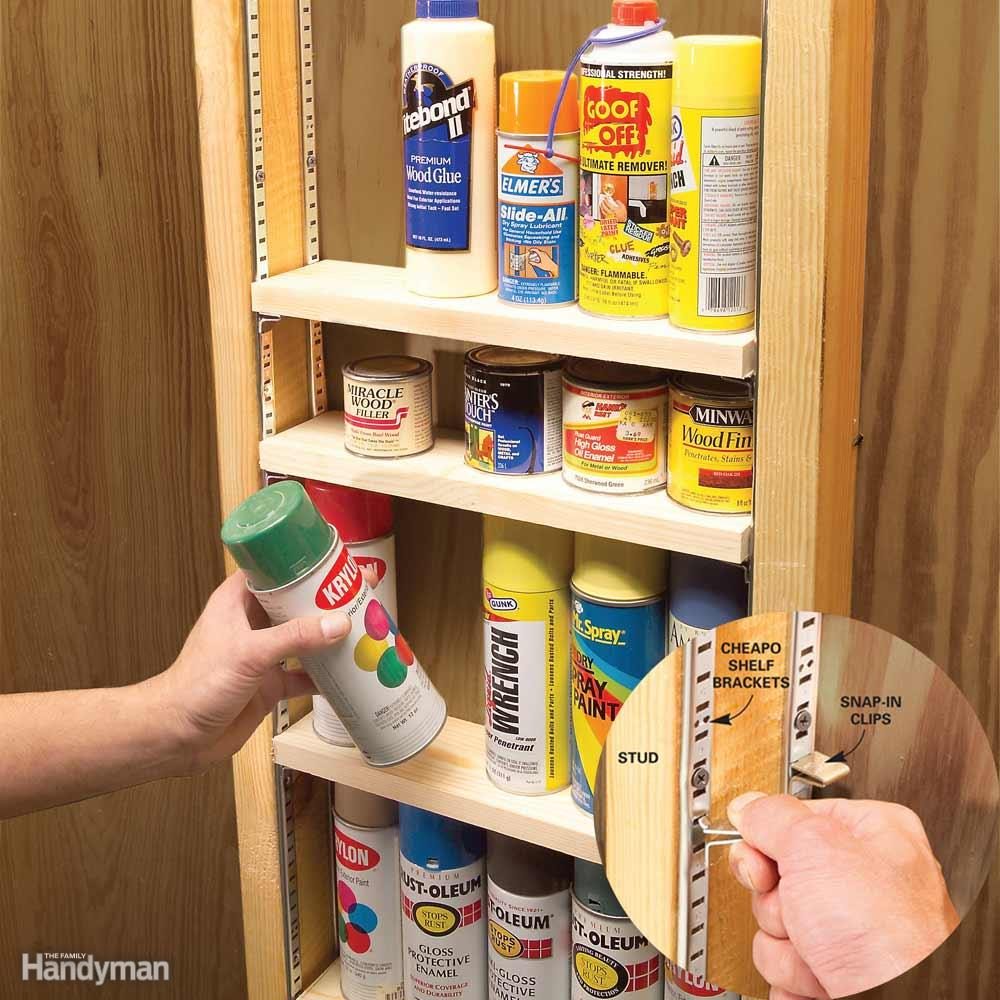
Between-Studs Shelving
Store smaller containers—spray paint, putty cans, glue bottles—right in the wall! Screw shelf brackets (6-ft. lengths are sold at home centers) to the studs, then install shelves, cut from standard 1x4 boards, on adjustable clips. The boards fit perfectly; there's no need to saw them to width.
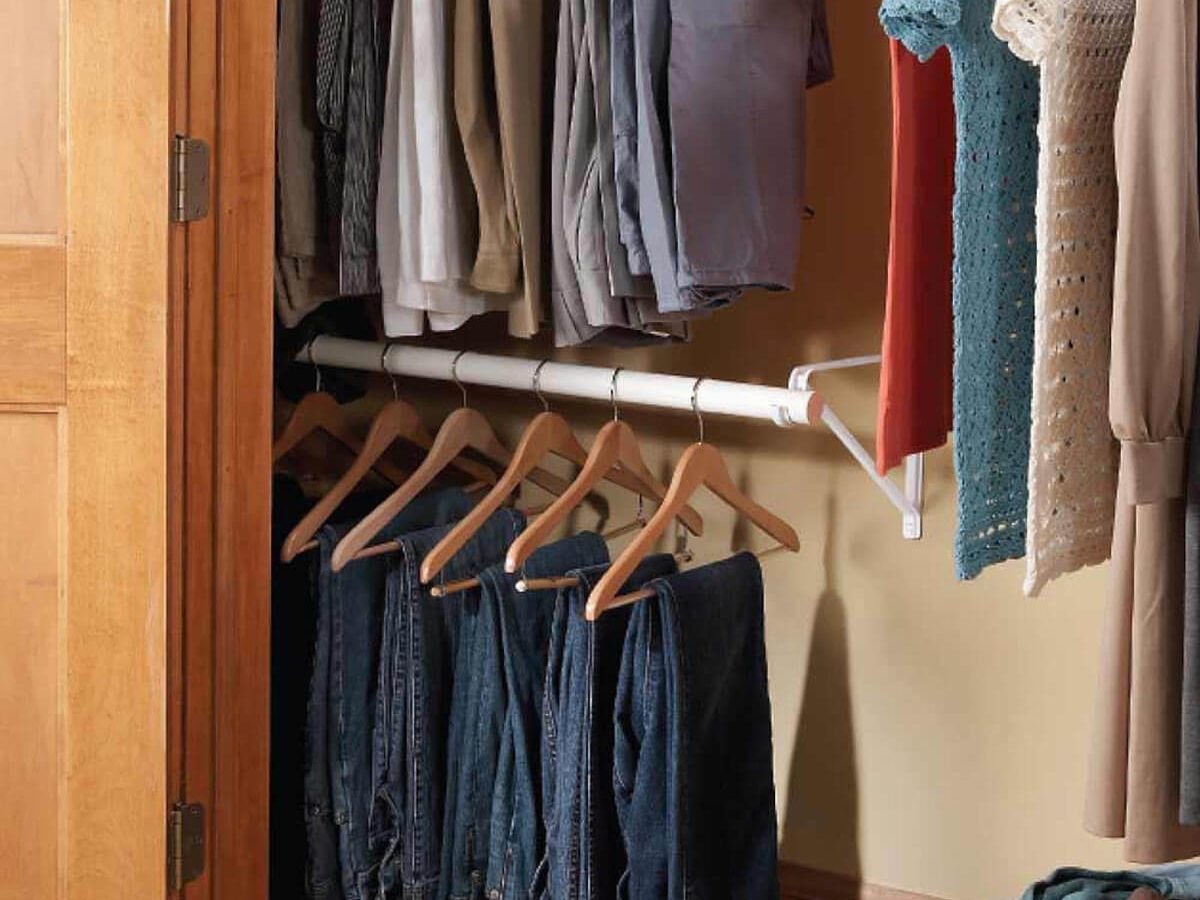
Clothes storage ideas for small spaces: Double-decker closet rod
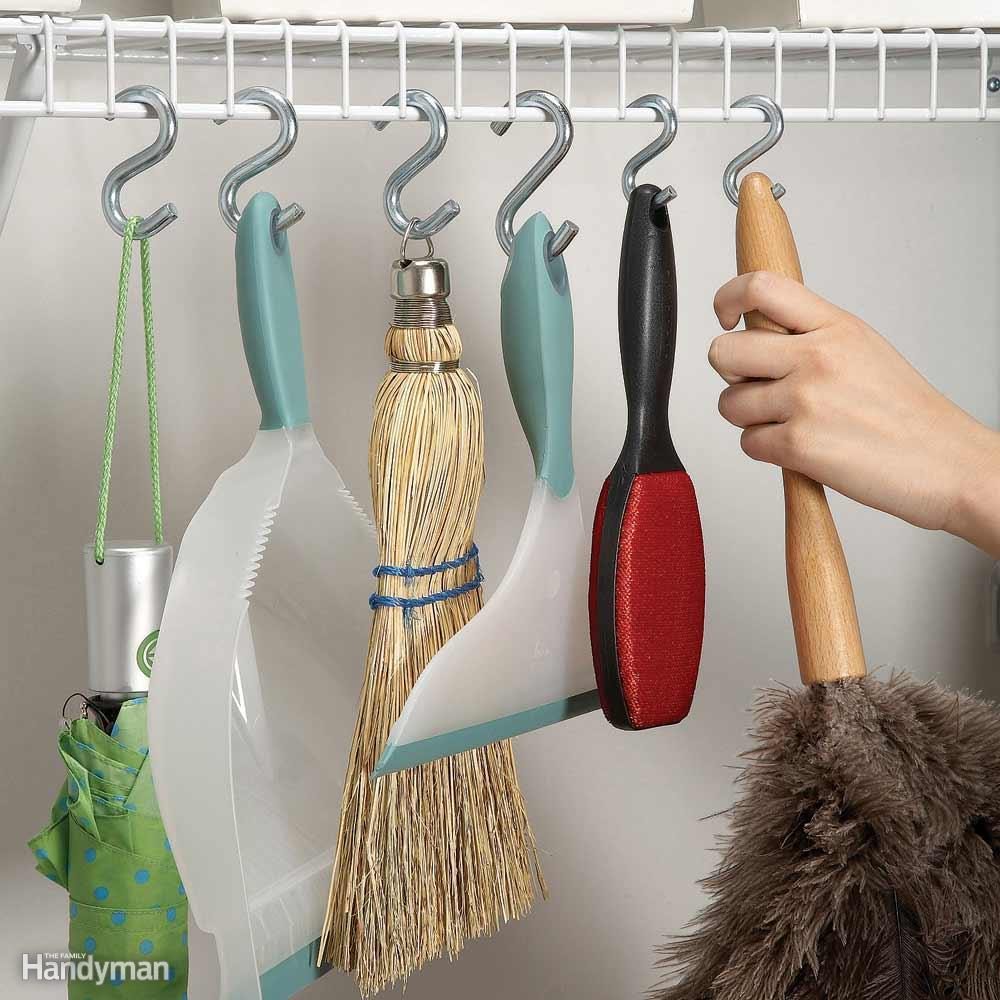
S-Hook Hang-Up
Turn any closet into a useful hang-up storage space by adding S-hooks to wire shelving. This provides tidy storage for mops, brooms and other cleaning tools.
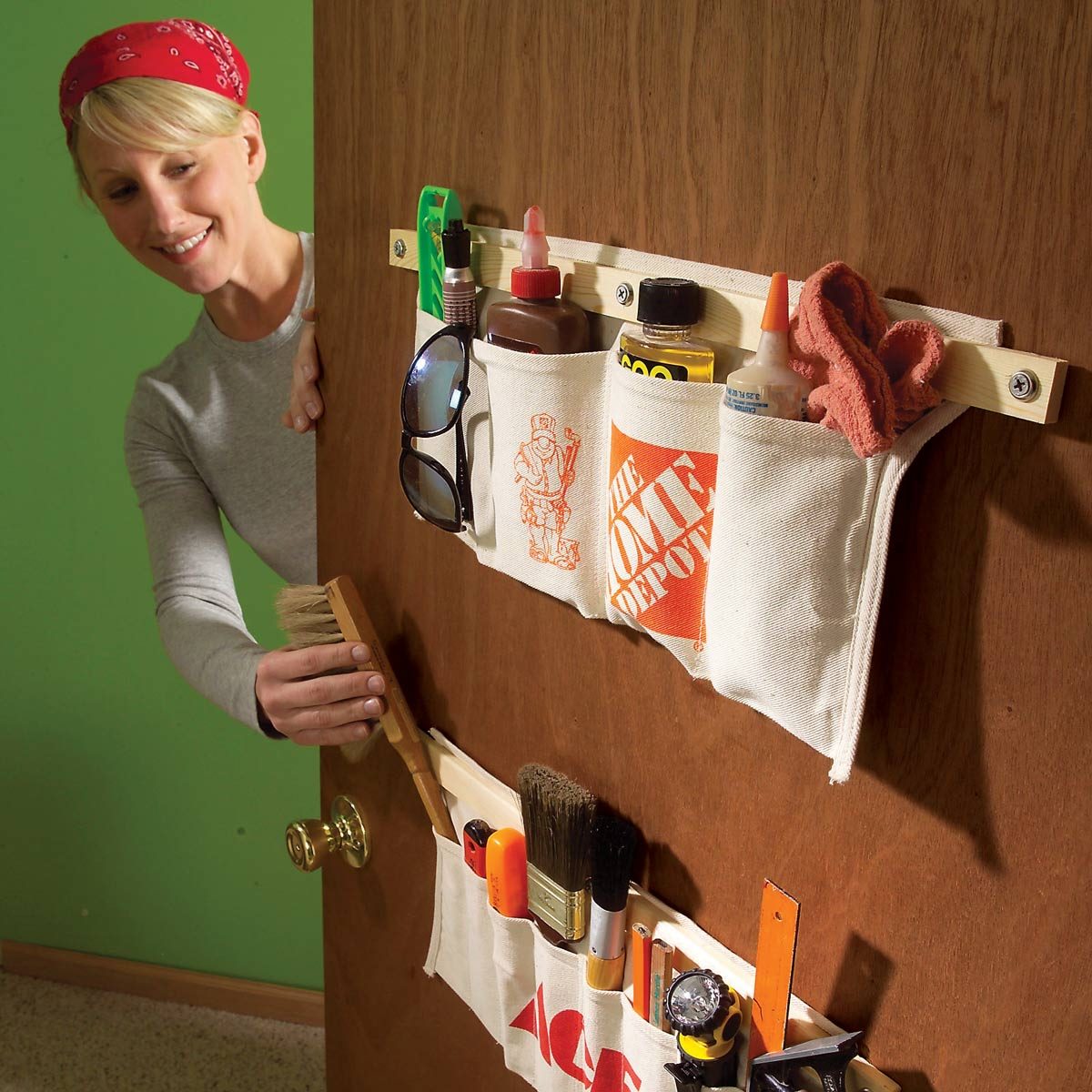
Behind the Door Storage: Tool-Apron Storage
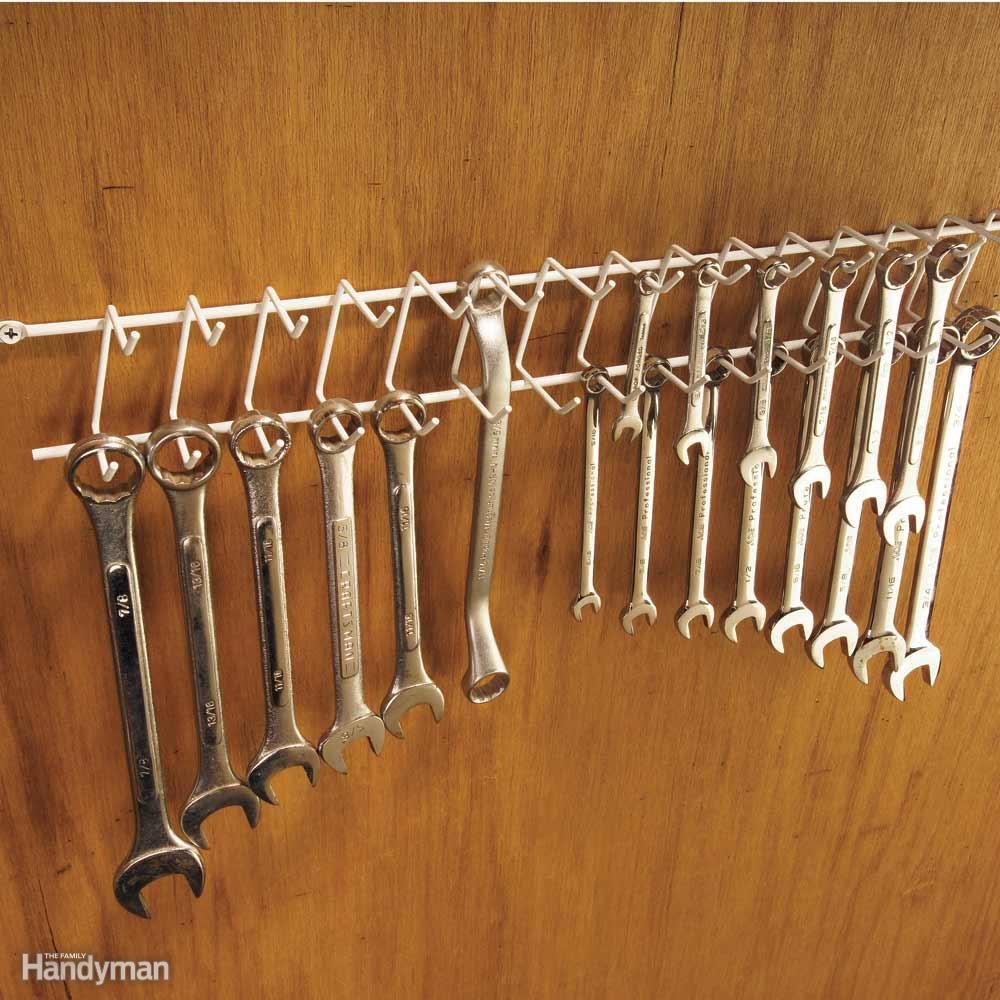
A Wrench Rack From the Clothes Closet
Are all your wrenches stuffed in a plastic bucket? Here's a better idea. Screw a tie/belt rack (available at discount stores) to a bare spot on the wall over your workbench and hang the wrenches—SAE and metric—where you can swiftly nab and put them away in an orderly fashion.
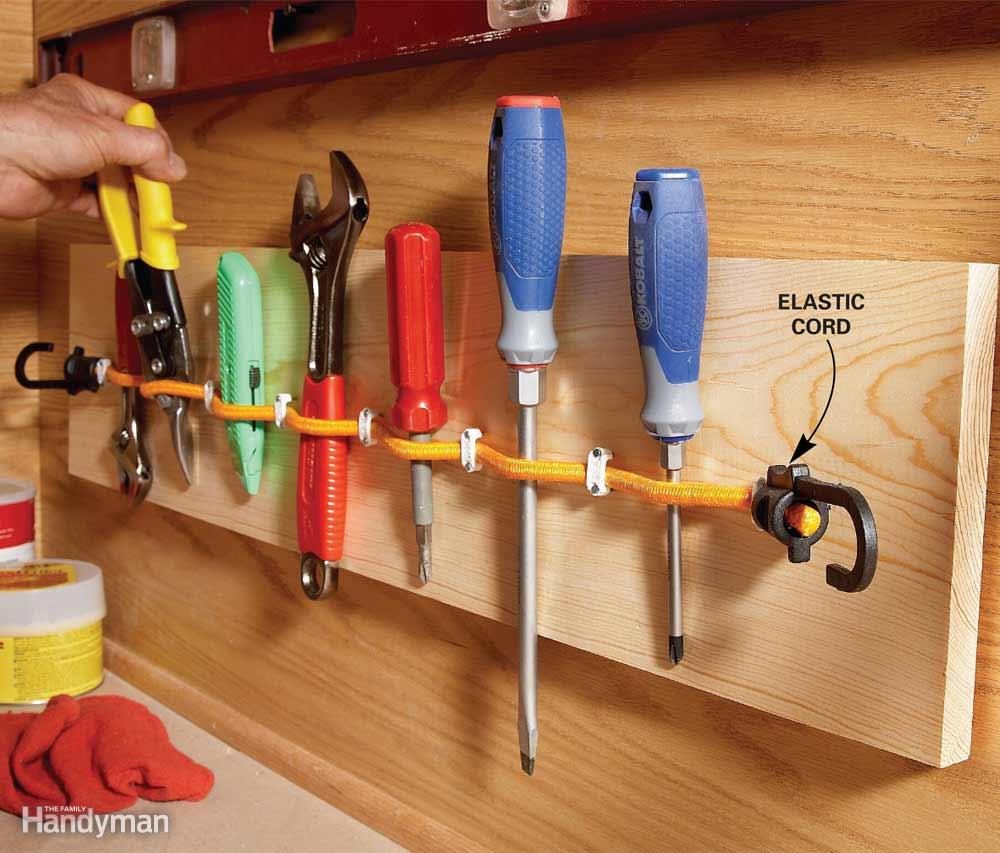
Elastic-Cord Tool Holder
Use elastic cords to make a portable tool organizer for chisels and other hand tools. Fasten one end of the cord to a 1x8 with an electrical staple, lay the cord straight without stretching it, then staple the other end. Add staples every 3 in. to create holders, leaving the staples just loose enough so the cord can still move. Then fasten the 1x8 to the wall.
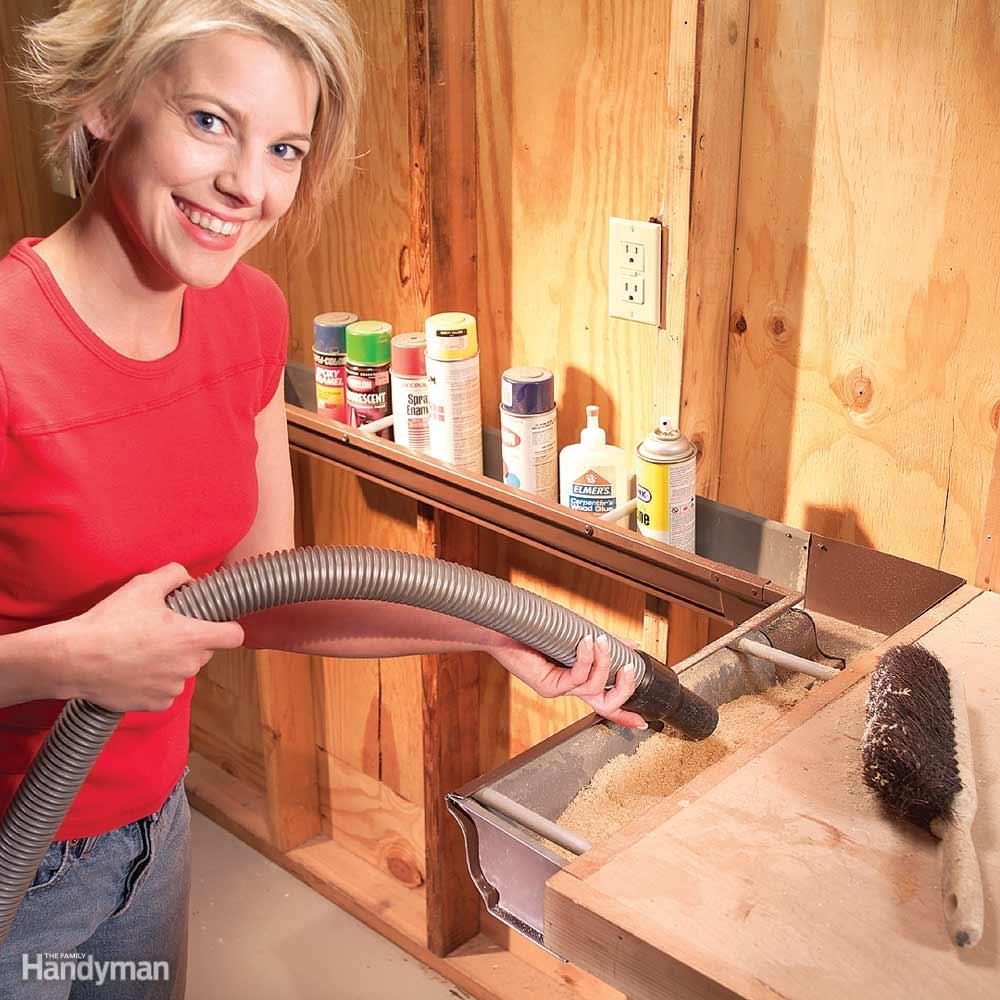
Gutter Bins
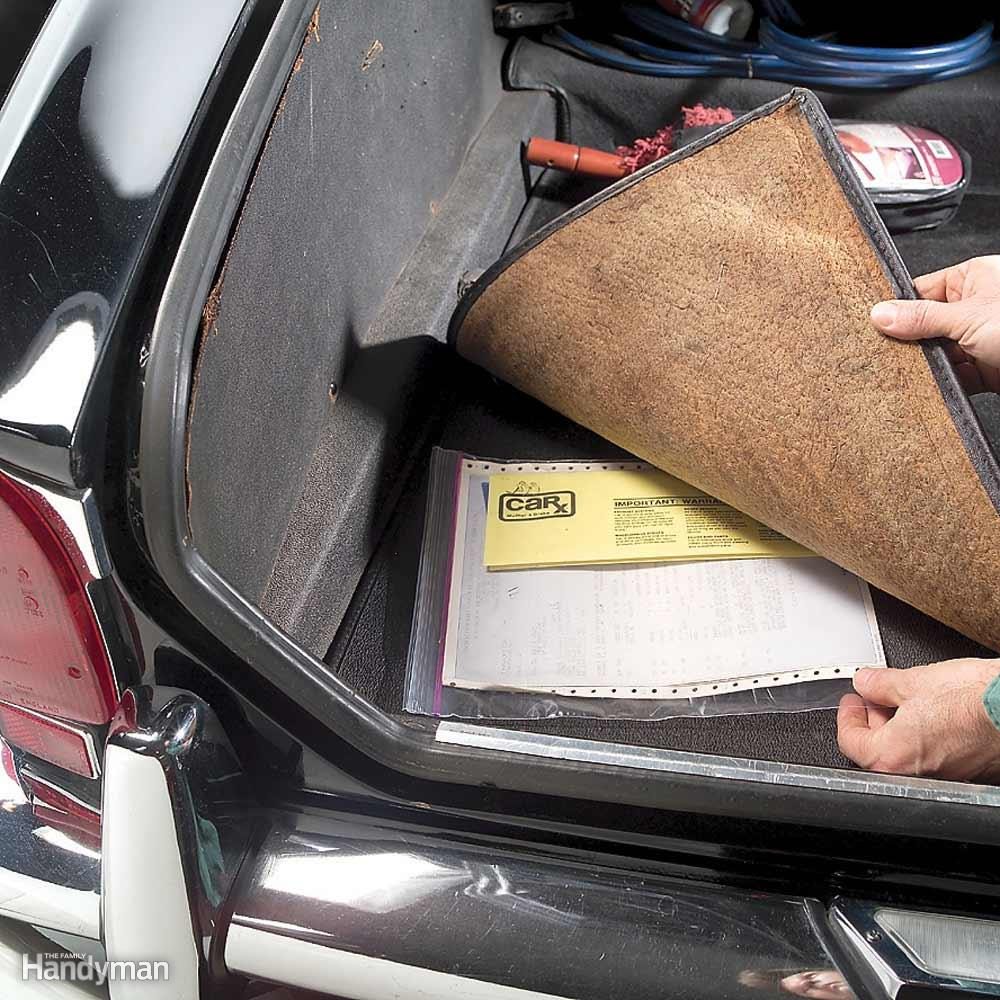
Car-Care File in the Trunk
Keep your car's maintenance records in the car itself and you'll never have to ransack your house looking for them. Just put them in a locking plastic bag and slip them under the carpet in the trunk.
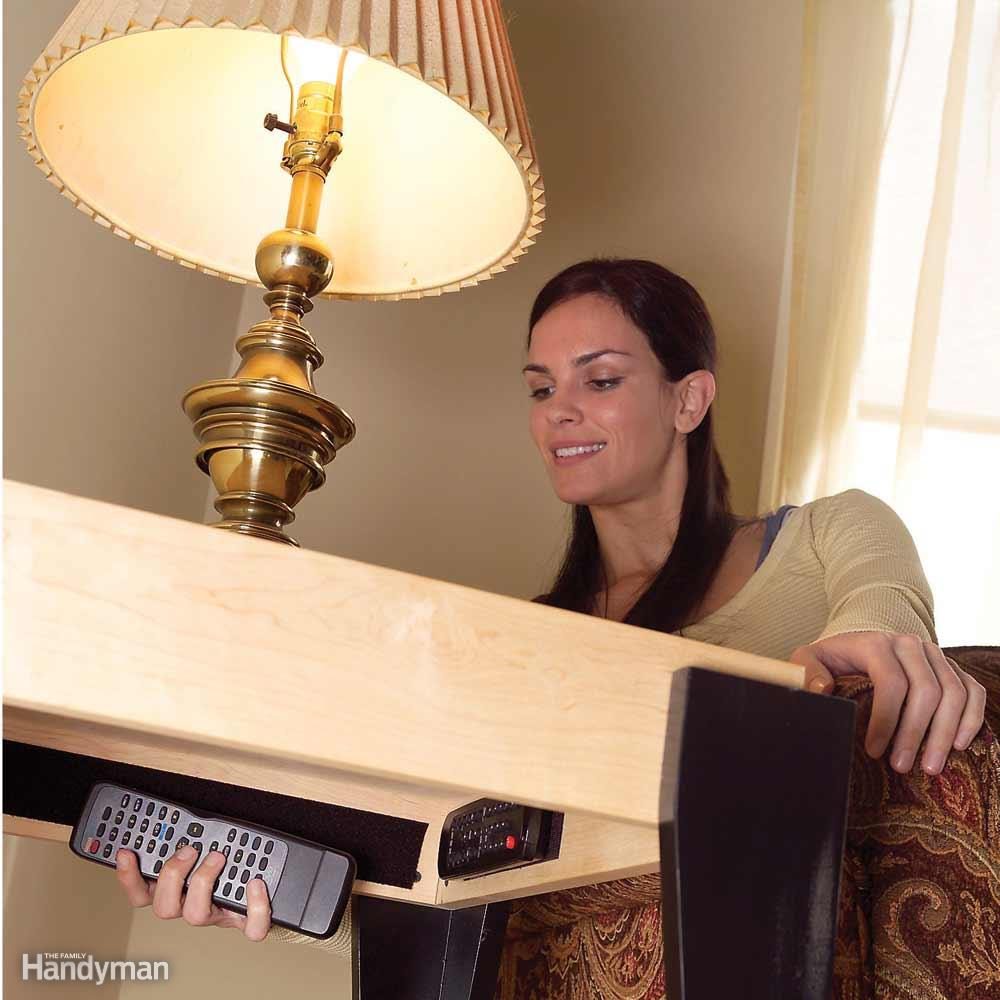
Disappearing Remotes
If your remote controls are cluttering up your coffee table and getting lost behind sofa cushions, here's how to neaten up. Apply adhesive-backed hook-and-loop strips to the underside of the coffee table and to the backs of the remotes. To avoid snags on upholstery and clothing, put the soft (loop) material on the remotes. Now all the controls are hidden from view, but you'll always know where to find them. Hook-and-loop strips are available at home centers and discount and hardware stores.
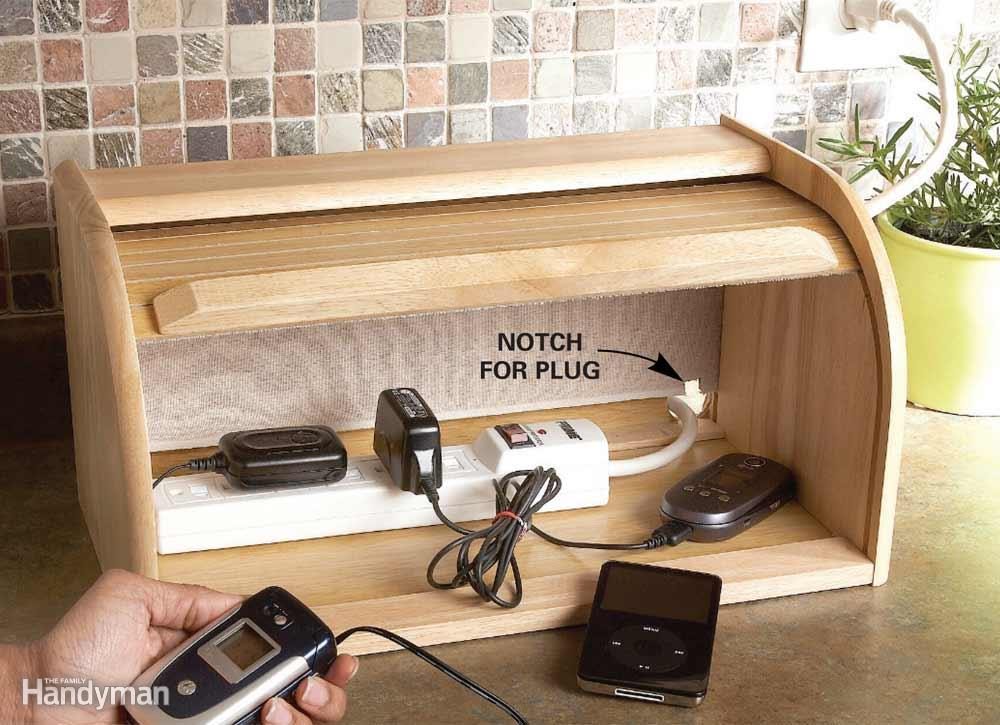
Charger Hideaway
Nothing clutters up a space more than the spaghetti heap of cords and plugs needed to recharge all those cell phones and other electronic toys. Create a discreet charging station with a small bread box and place a power strip inside. Drill a hole in the back to run the cord to the receptacle. Plug in your power-hungry devices and close the door for an orderly desktop or kitchen counter.
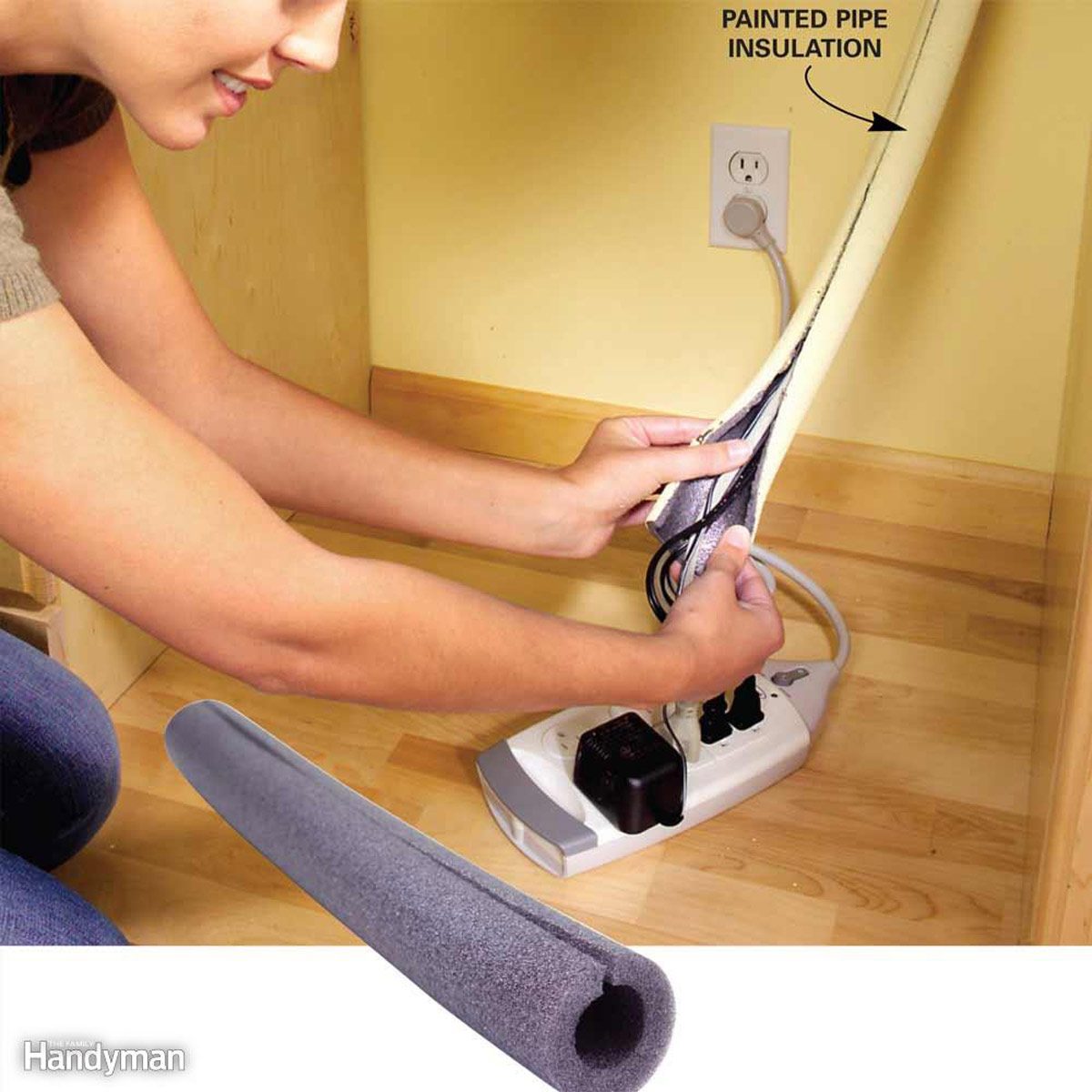
Cord Control

Hook and Chain Cord Hanger
A length of chain and a wall-mounted coat hook provide a secure hangout for bulky electrical cords, ropes and other cumbersome coils. Hang one end of the chain on the lower hook, then loop the chain around the coiled cord and attach the other end of the chain to the upper hook.

Safe Cord Storage
To store elastic cords safely and neatly, pull out the spine of an old three-ring binder. Punch out the rivets and screw the spine to the garage wall. The rings are the perfect spot to hang cords without dangerous tension.

Three-Ring Tool and Appliance File
Store your appliance and tool manuals in three-ring binders so you can find them when you need them. Insert labeled dividers to organize them for quick reference.
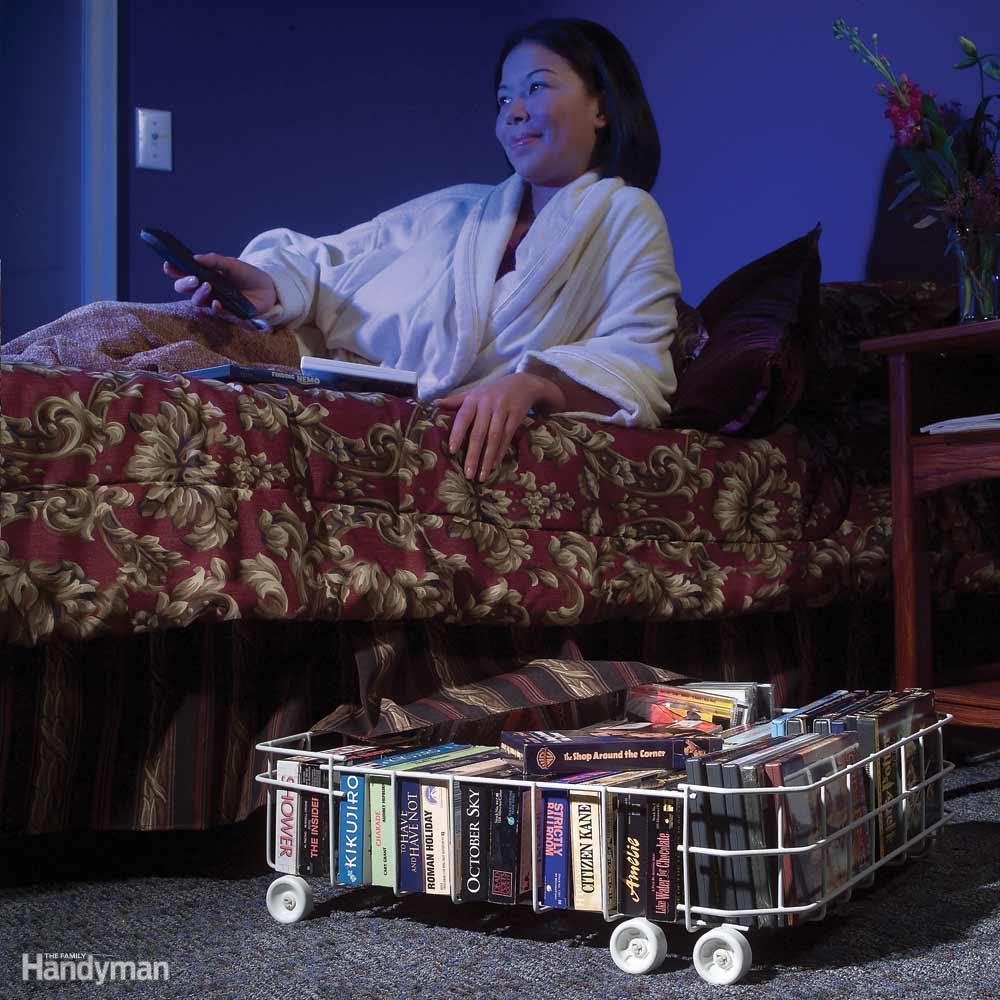
Under-Bed Storage Rack
If you're getting rid of your old dishwasher, hang on to the lower dish rack. Slip it under a bed for convenient roll-out storage.
FAQ
How can I choose the best clutter-busting solution for a small space?
One way to choose the best clutter-busting solution for a small space, according to professional organizer Keena Lee of Calm Spaces is to “appropriately size your storage systems.” You should ensure that your storage space is both big enough to accommodate additions and small enough that you won’t let any collection get out of hand. (This requires regular decluttering.)
How does decluttering improve functionality?
Decluttering has a direct impact on functionality. Lee puts it this way: “Decluttering lets your storage systems function as intended. When storage systems are too full, there is no room for error. When things only just barely fit in a cabinet, you will take the shortcut and leave it out. I recommend keeping all your storage systems at least 10 percent empty (more is better if you can manage!).”
What’s the best way to maintain a clutter-free home long term?
To maintain a clutter-free home long term, Lee says, “Limit impulse buying. Try batching your orders instead of clicking ‘buy now.’ Dedicate a day of the week as ‘ordering day’ and only place online orders that day. You’ll be surprised how much you decide not to buy after you’ve lived without it for a few weeks. This ensures everything you order, you’ve at least thought about it for a bit and confirmed you actually need it.”
Aaron Cash, president and co-founder of Garage Living adds, “It’s also helpful to set a schedule for regular clean outs,” adding, “When you take pride in the space and have storage solutions that work for your lifestyle, it’s much easier to prevent clutter from creeping back in.”
About the experts
Kenna Lee is the founder and chief product officer of Calm Spaces, a professional organizing firm serving clients in the San Francisco Bay Area and Atlanta, GA. She holds a Certificate in Essentials of Organizing from NAPO, a Foundation Certification in Chronic Disorganization, and a Certificate of Study in ADHD from the Institute for Challenging Disorganization. She also has a Specialist Certificate in Brain-Based Conditions, and a Specialist Certificate in Life Transitions. She excels in working with high-net-worth households, people with ADHD, and clients navigating major life transitions and is a sought-after expert on clutter, overwhelm, and organizing with empathy.
Aaron Cash is the co-founder and president of Garage Living, Canada’s largest garage storage and organization contractor. The company currently has 50 franchises in North America and distributes its own design of storage and organization products.



















